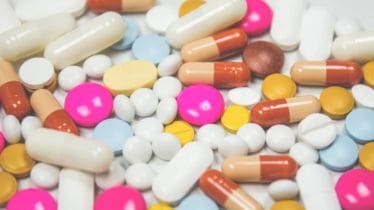As the death toll of children linked to consumption of contaminated cough syrup in Madhya Pradesh went up to 20 on Wednesday, the Central Drugs Standard Control Organisation (CDSCO) has found that drug companies have failed to follow rules that every batch of medicinal ingredients must be tested. An advisory by the drugs controller general of India, Rajeev Raghuvanshi to state governments also stated that the regulator had carried out checks at manufacturing facilities and found serious lapses.
Later in the day, Madhya Pradesh deputy chief minister Rajendra Shukla while confirming the deaths of 20 children after drinking the toxic cough syrup Coldrif manufactured by one Sresan Pharmaceutical in its Tamil Nadu unit, said five are under treatment for kidney failure.
Reuters reported, quoting unidentified sources that the World Health Organization was seeking clarification from New Delhi on whether the cough syrup linked to the deaths has been exported to other countries. “The WHO said it will assess the need for a Global Medical Products Alert on Coldrif syrup once it receives official confirmation from Indian authorities,” the agency said.
In its advisory to the all state and Union Territory drug regulators, the CDSCO asked them to test the raw materials and finished formulations before they are released to the market. It said that the regulators will have to ensure that the drug manufacturers have a robust vendor qualification system in place. Additionally, the raw materials, including excipients, used in the manufacturing process must come from reliable approved vendors only, it added.
Experts said that the government is engaging with industry players to plug the gaps in the supply chain, especially in solvents like propylene glycol (PG). “The government is considering the end-to-end supervision of the supply chain. While it’s not possible to inspect the supply chain on a daily basis, there are other measures being discussed,” said a source.
To reduce the risks, the government is also considering disincentivising the use of PG that is believed to have caused the recent deaths. Even though PG can be legitimately used in the production of pharma products, its use carries a risk of potential contamination with impurities like diethylene glycol (DEG) and ethylene glycol (EG).
“There are discussions happening on mandating the pediatric drug manufacturers to prominently display the use of PG in their drugs so that the consumers are aware of the potential risks. Also, the government is considering restricting the use of products containing PG in the state and central government contracts,” said the source.
“The excipient supply chain needs to be fixed. In the current instance, the agencies found gaps in the safety protocols followed by the pharmaceutical company. The government is keen on bringing changes in the regulations so that such issues don’t recur,” said Viranchi Shah, spokesperson of Indian Drug Manufacturers Association (IDMA).
The CDSCO advisory said that as per Drugs Rules 1945, licensees are required to test each batch of the raw material and each batch of the final product in their own labs or any lab approved by the licensing authority. Further, they are required to maintain records showing the particulars of such tests as specified in Schedule U of the Rules.
“During the inspections carried out at the manufacturing facilities and in the investigations of the drugs declared as ‘Not of Standard Quality’, it was observed in the reports that the manufacturers are not carrying out testing of each batch of the excipients and active pharmaceutical ingredients (APIs) for verification of compliance with the prescribed standards before using them in the manufacture of formulations and also in the finished products,” the CDSCO said.
